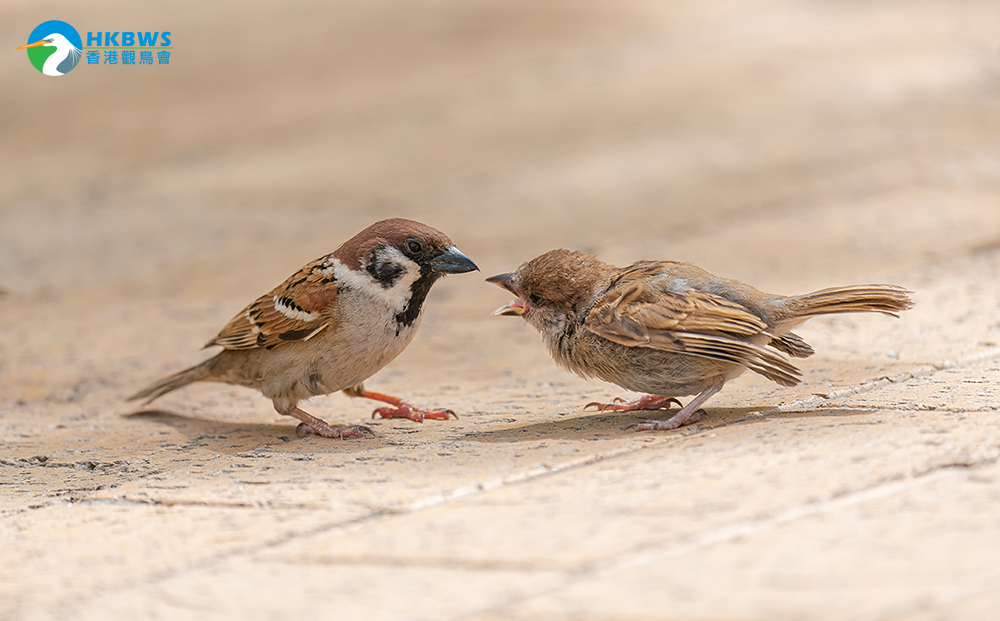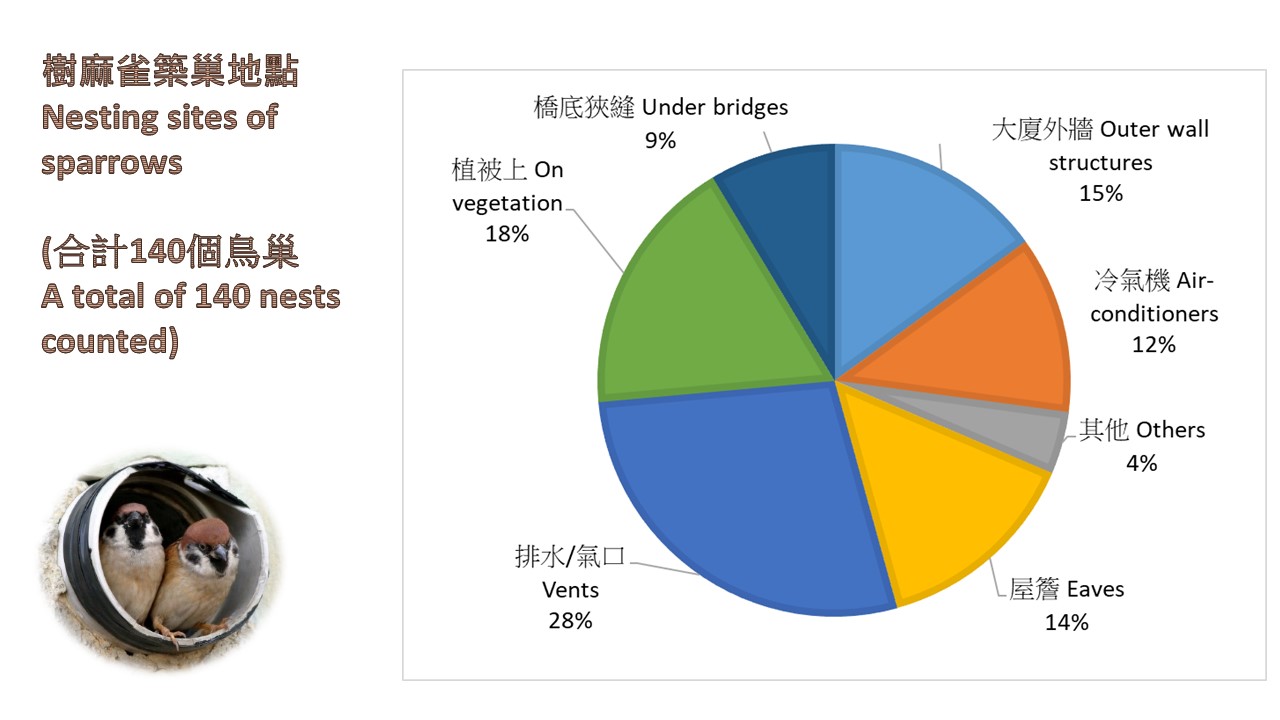According to the 6th Hong Kong Sparrow Census organized by the Hong Kong Bird Watching Society (HKBWS), there are about 210,000 Eurasian Tree Sparrows (sparrows) in Hong Kong, a drop of 30% from 2016. The latest estimation hits record low in 6 years, with multiple habitats suffering a decline in sparrow numbers. However, it is premature to conclude that sparrows in Hong Kong are undergoing genuine population collapse, as natural fluctuations may play a role. Regular bird counts and in-depth analysis are needed to uncover the cause of shrinking sparrow population.

Plummeting Sparrow population? Avoid jumping to conclusions
The 2021 census, which was held in May, recruited more than 160 participants and surveyed 88 routes covering all 18 districts. Census routes are categorized into six zonings, namely residential, industrial, commercial, recreational, agricultural and village areas. It is estimated that there are about 211,107 sparrows in Hong Kong, a noticeable decline compared with 2016 (around 305,000). Almost all land types, with the exception of commercial areas, recorded fewer sparrows. Such population decrease may be an early warning signal to conservationists, yet whether it's a long-term trend is as yet unknown. Census data in the next two to three years will be critical.
Disappearance of sparrows as a common phenomenon
Declining sparrow numbers is not unique to Hong Kong. Numerous European and Asian cities have been confronting the same scenario in the past decade. Current research appears to focus on House Sparrow (Passer domesticus), a common species in Europe and Central Asia. Reports on Eurasian Tree Sparrow (Passer montanus) are relatively rare.
The root causes of disappearing urban sparrows are yet to be figured out. Underlying factors may include:
- Modern building designs, which seem to favour glass walls, result in reduced nesting spaces
- Interspecific competition for nesting spaces
- Electromagnetic radiation from cell towers affecting reproductive capacity
- Reduced food availability as a result of declining insect/invertebrate population
Research and conservation hold equal importance
To root out the cause of sparrow population decline, extensive research is necessary to study how urban development and variations in population size of related species affect sparrow survival. HKBWS also recommends avoiding the use of nonspecific insecticides in pest control. Sparrows in Hong Kong are often seen in residential areas. During breeding season which lasts from March to June, they may nest in or near household buildings. Please show your patience and keep nesting sites free of interruptions.
For second straight year, the census was expanded to cover four more common urban bird species. Their populations remain stable, with 69,531 Spotted Dove, 17,390 Oriental Magpie Robin, 60,377 Red-whiskered Bulbul and 3,097 Red-billed Blue Magpie living in Hong Kong urban areas.






